I’ve talked recently to a number of gardeners who refuse to go outdoors unless the temperatures are below ninety degrees, and, of course there have been few of those over the summer months. I’m afraid that I can’t recommend a remedy for the summer heat, though dangling your toes in a cool garden pond generally improves my disposition.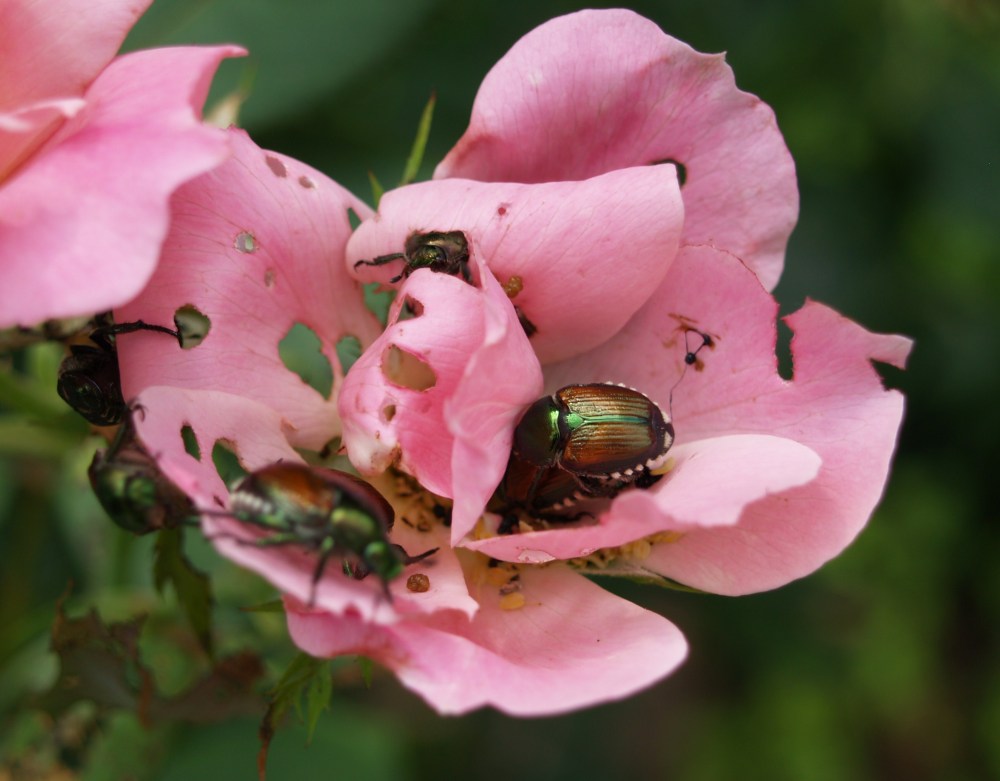
I have noticed more Japanese beetles (above, on Pink Knockout rose) in the garden than in recent years, though other gardeners have told me that they are finding fewer this summer. If you will listen there are bound to be theories that warmer (or colder) than average winters are resulting in more beetles, or less, depending on whether there are more or less beetles in their garden. I haven’t noticed any discernible patterns, and in any case the beetles are only a temporary nuisance, and I do not spray anything to be rid of them. 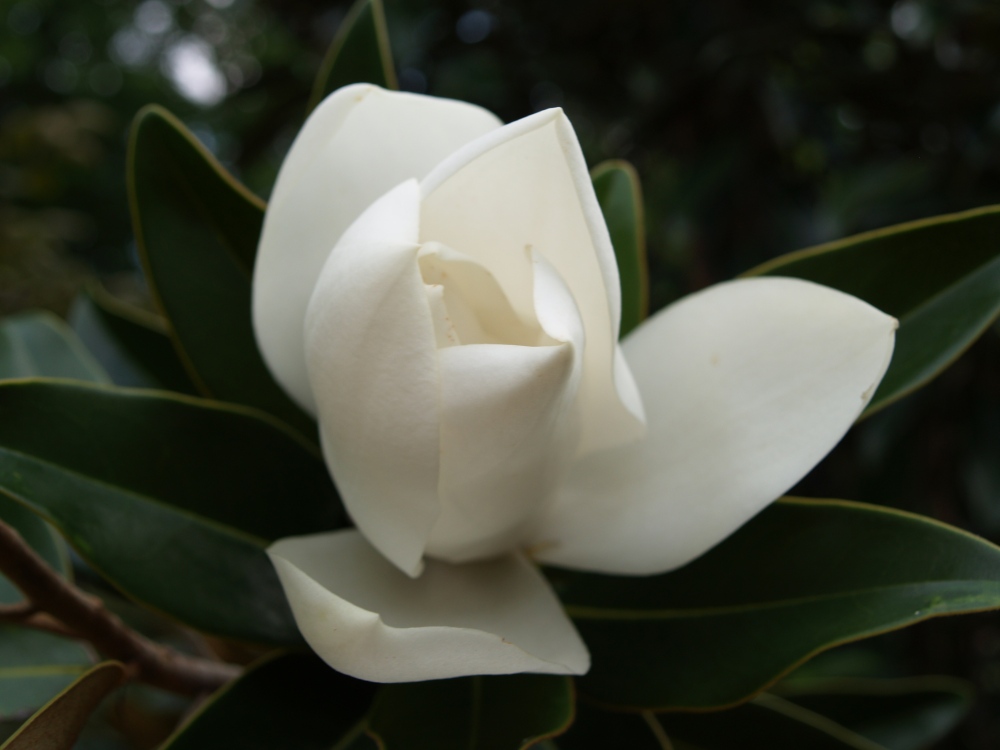
By early August only a few stray beetles remain in the garden, and even when they were at their peak most were gnawing only on the blooms of the Franklin Tree and roses (after beetles, below) and the occasional blooms of the southern magnolias (above, after beetles), but caused little damage.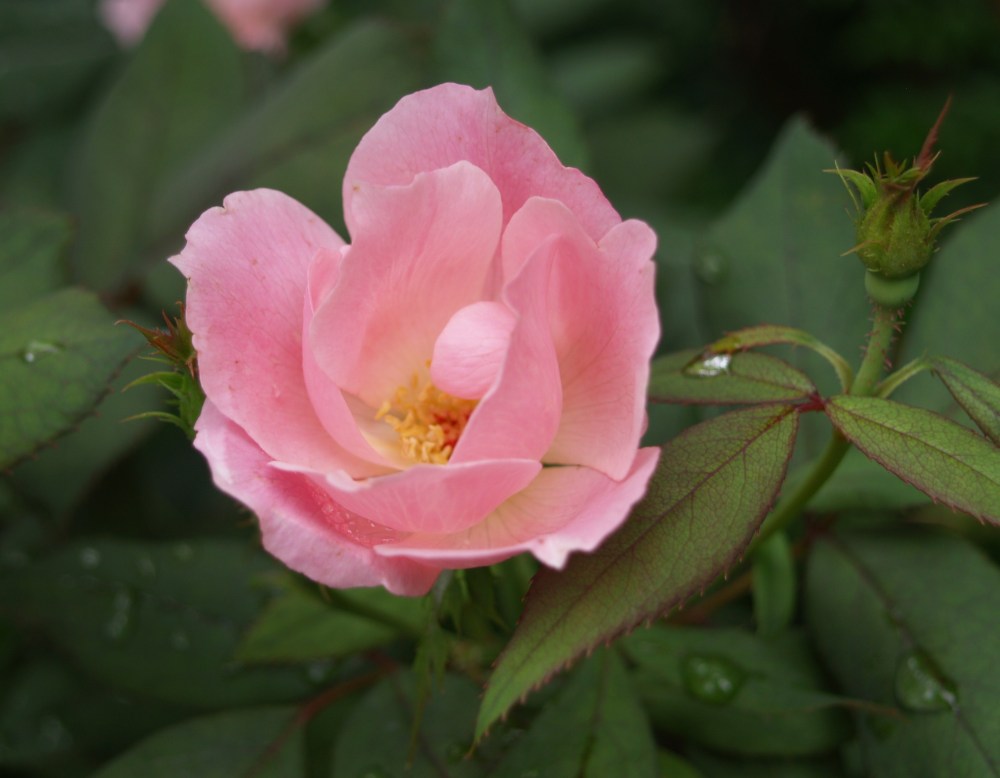
Fall webworms are out, though not in my garden, and if you are willing to put up with the unslightly webs they are practically harmless. If webworms are a bother you can knock out most of the web with a direct spray of water and most will fall to the ground, but the leaves they eat will be dropping soon enough, so the tree does not suffer at all from their presence. In past years I had webworms in a large Canadian Red cherry every summer, and usually I left them alone. Then, the cherry snapped off at the base in a howling thunderstorm a few years back, and I’ve had no problems since. The webworms played no part in the tree’s demise.
A variety of weeds springs to life with every summer rain, and I’m certain that the small areas of lawn have more weeds than grass. I’ve done quite well to keep the weeds in the planting beds under control despite my summer travels, and I’ve no doubt that a bit heavier cover of mulch would be helpful. However, I’d rather budget for additional plants than mulch, so I’ll pull and hoe until the shrubs and perennials are jammed so close that there is no room for weeds to sprout.
Along the driveway in the front garden there is a dill weed that annually pokes up from behind a pink rose that flops about, and this year I cut the rose back nearly in half, so that the dill has practically overwhelmed the poor rose. I don’t believe that dill weed is hardy, but it drops numerous seeds, and the seedlings have little chance for survival under a dwarf fruiting peach and a wide spreading purple magnolia. The small open area by the rose is the only space with enough sunlight for it to grow, and there it grows dependably year after year. 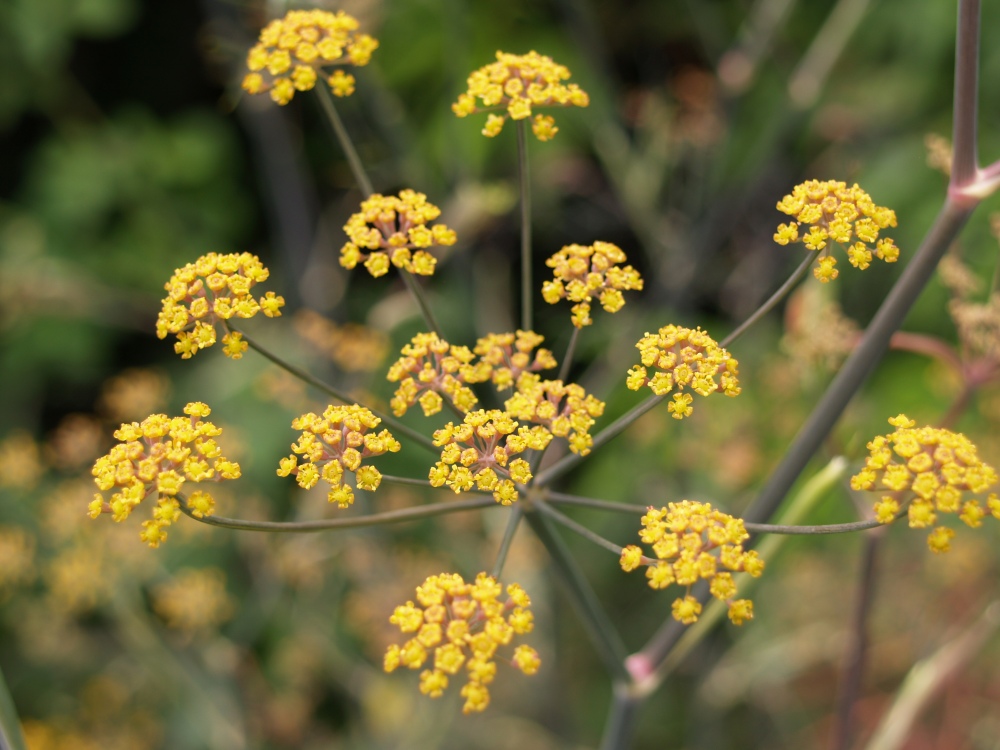
I don’t use the dill for cooking (and, of course, neither does my wife), but I’m fond of the lacy foliage and the small bright yellow flowers (above) are delightful, even though the contrast with the deep pink rose is shocking. I have not seen swallowtail caterpillars on the dill weed for several years, though I frequently check for them, and if you should be fortunate enough to have these wonderful creatures in your garden I would advise against removing them, and certainly against spraying anything to kill them. If the caterpillars eat more of your dill than you’d like, you should plant another so there is enough for both you and the caterpillars. 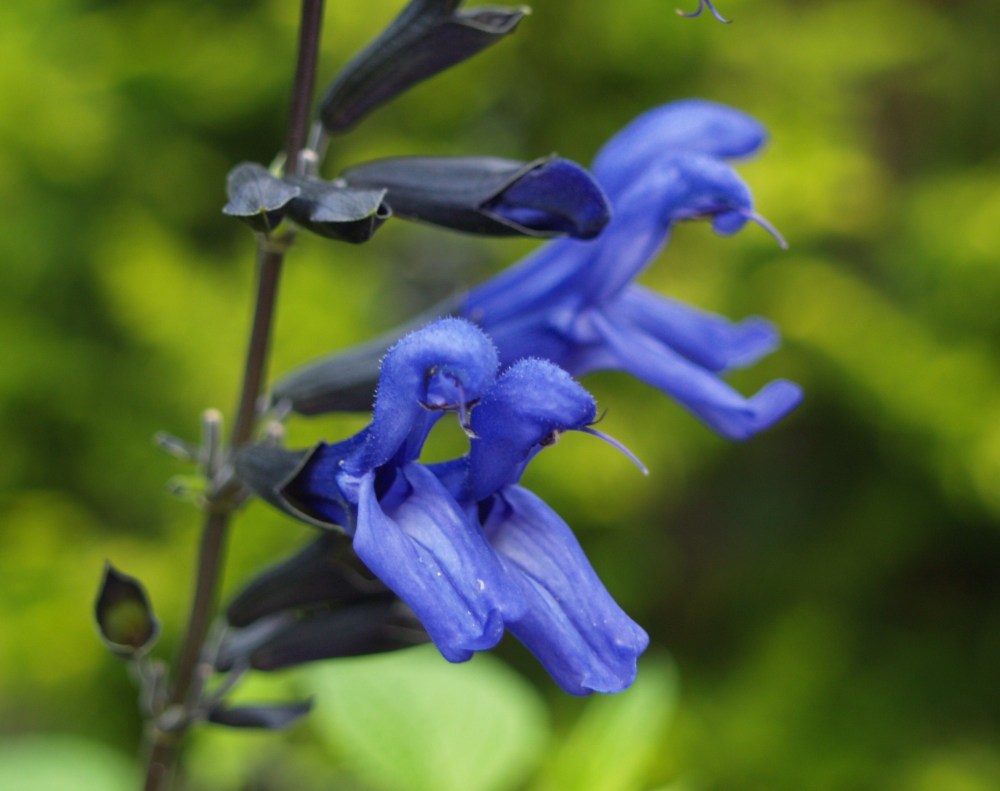
I’m certain that in recent weeks I’ve gone on far too long about butterflies and bumblebees, but at every turn in the garden they are buzzing about, darting from salvia (above) to hydrangea and back, onto the caryopteris (below), and then to the Franklinia.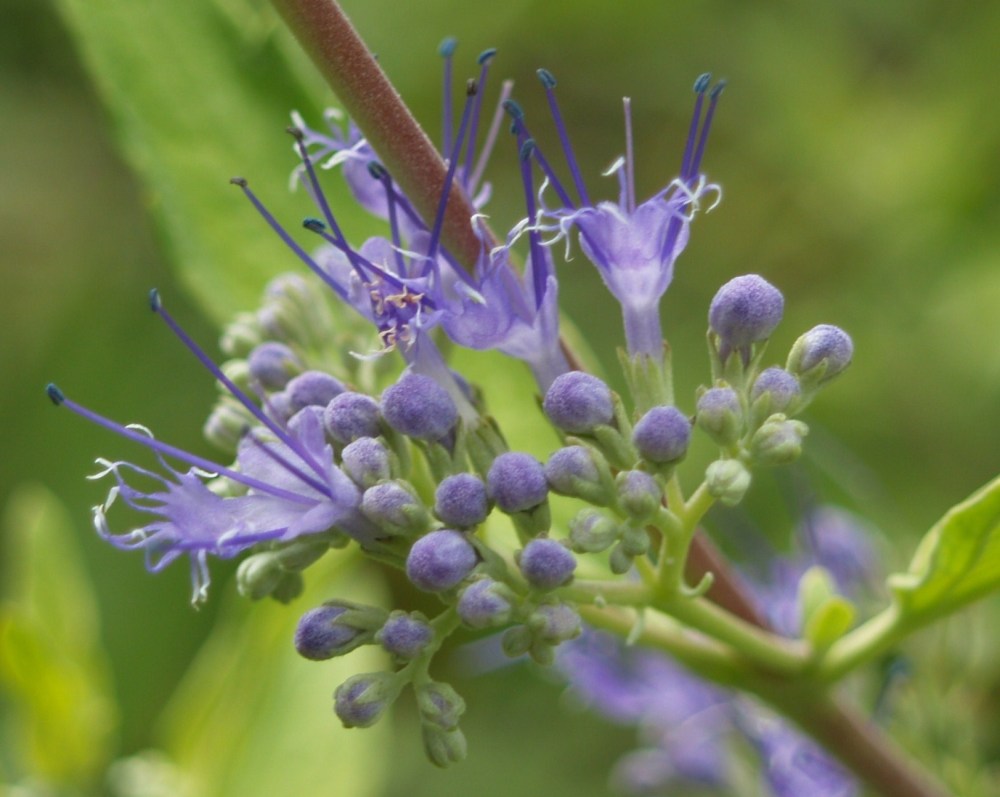
So much activity on a steamy August afternoon draws me to stick my nose (or my camera) close enough to be quite a bother, but if I approach gently they pay me little attention. For me, this is adequate reason to roam through the garden each evening, despite the heat.